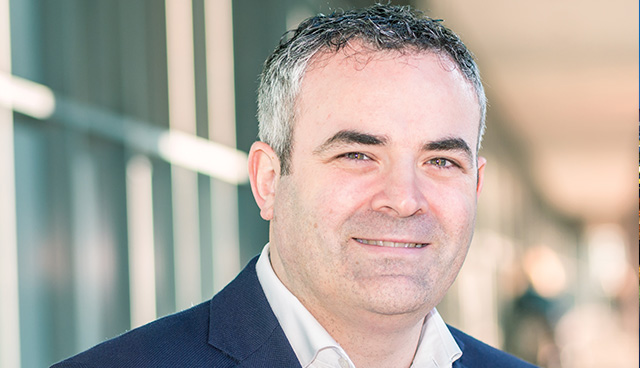Serving the patient through procurement
 John Swords, Head of Procurement for the HSE, explained how it practically makes a difference to patients and the scope for improving services as reform gathers pace.
John Swords, Head of Procurement for the HSE, explained how it practically makes a difference to patients and the scope for improving services as reform gathers pace.
With 30 years of experience in the Health Service, John Swords is confident that the procurement work which he heads up delivers a better service – and better outcomes – for patients in the State.
Swords has led on procurement within the HSE since 2012 and, speaking at eolas’ procurement seminar, noted that this function of an organisation comes in for “a lot of criticism” during drives to centralise and reduce costs. Notwithstanding that, it is a rewarding area in which to work.
“There is a responsibility to our own businesses,” he added. “We’re very cognisant of that and we need to be because we know the difficult times over the last number of years that we’ve gone through.” While he acknowledged that there may be too much of an emphasis on cost, it was worth remembering that “good procurement brings value” rather than the other way around.
The HSE is bringing a number of ‘common services’ together under Health Business Services (HBS) – led by Director-General Liam Woods – with procurement sitting alongside estates, ICT, human resources and finance.
Estates is also a major commissioner of procurement, and the two business areas share the same policies and procedures. This is a combined effort to remove duplication, stay within the legal framework, and supporting businesses. Health has certainly been changing over the last 20 years and will continue to change: “What we have to do is to try and build procurement in a sustainable way that outweighs the change process that’s going on all the time and continues to bring value to the organisation.”
Procurement staff had three watchwords:
1. service;
2. compliance; and
3. value.
“If a contract isn’t in place, it doesn’t mean the patient doesn’t get the product or the service,” Swords said of the HBS approach. “It actually means that the logistics people or the hospital will get it somewhere else. It’s as simple as that.”
Service and compliance were essential for creating value and the primary role was to deliver services to patients. Strategic objectives for 2015-2016 include introducing clearly defined standard operating models and this will “fit and dovetail” with the work of the Office of Government Procurement. A shared approach, within the health sector’s shared services and corporate functions, to enterprise resource planning (ERP) and business intelligence will also be adopted.
Patient focus
“Our real customers are our patients,” he emphasised, “and our customers in future will include [people in] areas like defence, education and other areas that will require services from us from a health point of view.” However, the internal customers who provide health services were sometimes more demanding than the patient i.e. a desire for immediate value for money.
HBS is conscious of the overall government objective of trying to get value for money. In the context of austerity, if the HBS does not take money out of the system, it will not be able to sustain its services. Swords elaborated: “If we don’t do what we’re meant to do, someone suffers and that isn’t the Government, or the procurement agency in the health services, or the OGP or the company. It’s the patient and we’re all related to that somewhere along the line.”
Minister of State Brian Hayes set the twin goals of making it easier to do business with government and government getting value for money.
The OGP has a target of achieving €500 million in savings through procurement by 2016 and aims to speak with “one voice” to the market.
“We do support what is happening in the key Public Service reform programme, to reduce costs and achieve better value for money,” Swords commented.
“The argument lies in between – as to how we support SMEs and other companies that are within our environment and, more importantly, how we support our patients.”
Furthermore, patients will not “give a damn” whether an official is before the Public Accounts Committee but they will “absolutely” care about whether a product to meet their needs is delivered.
The work on a second draft for the single plan for procurement is well advanced. Swords continued: “It’s not as simple as coming in and saying: ‘We’re going to do procurement for everybody.’ That’s not going to work. That’s been tried before and [it] failed badly. The best way forward is for us to work in a collaborative manner.”
Improved patient care is the over-riding objective but he also welcomed the commitment to bring in training for procurement as this was often the first thing to be cut: “We bring a benefit in being professional in how we approach that.”
Coding and accounting
A general shift from paper-based to electronic records is taking place with a view to improving patient safety. An allergy to penicillin can lengthen a patient’s stay in hospital and make them more vulnerable to infection. The adoption of GS1 coding standards is viewed as a very important priority.
The global trade item number (GTIN) is the first component of the GS1 barcode, followed by the batch number and expiry date. When a product recall happens, the HSE will be able to “track and trace very, very quickly.” Swords stated: “We want to know how much it is for somebody to come in and have an operation. We’re advanced on that but we need to enable the service to be able to give quicker information.”
Practical results
After a review of services, the HSE decided to establish a national logistics distribution centre. This is currently being set up and will act as a single point of contact for SMEs from all parts of the island. Swords is particularly proud that Ireland has the world’s only national programme for transporting vaccines which, despite initial complaints, has saved money and delivered a better service as fewer vaccines are damaged on their way to the surgery e.g. by excess heat.
Similarly, a proper coding and logistic standard is being introduced for blood products – which were previously delivered by taxi. A 0.5°C variation in the temperature of transported blood compared well with much higher increases beforehand. The price of insulin pumps has been reduced by 30 per cent, thus eliminating waiting lists and bringing Ireland into line with expected performances in the rest of Europe.





